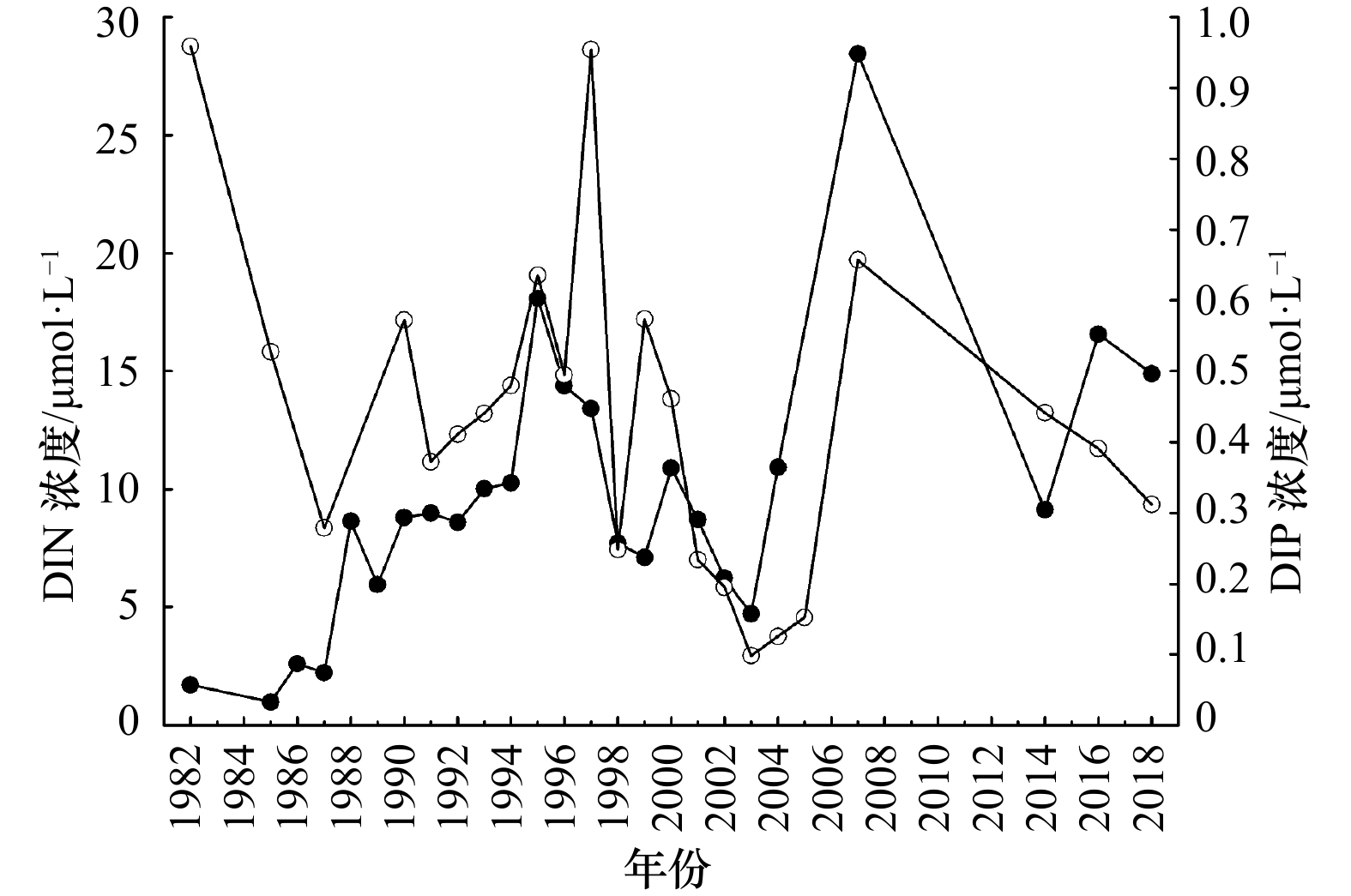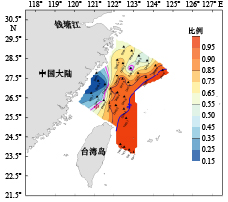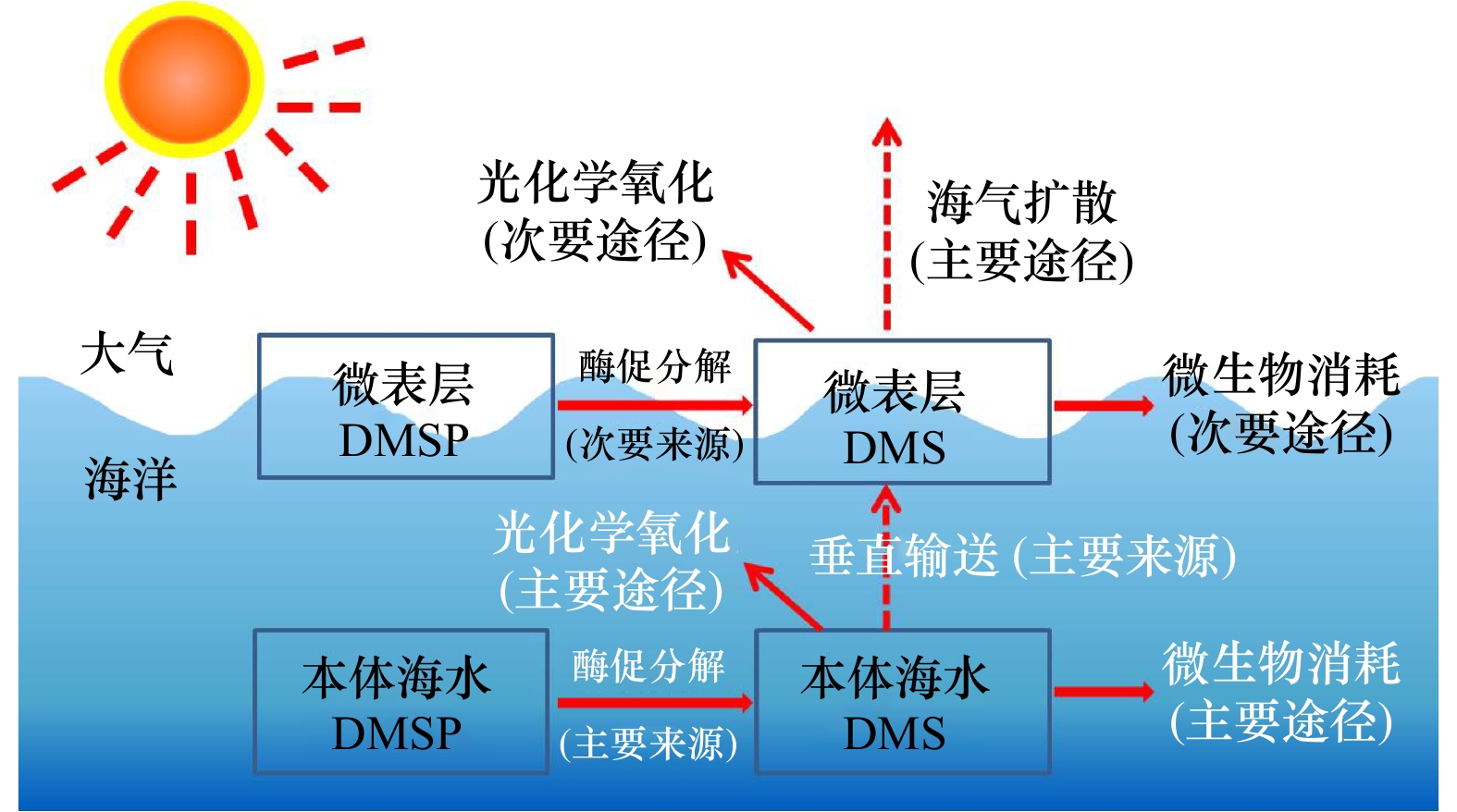Main progress on chemical oceanography in China over the past 70 years
-
摘要: 我国的海洋化学工作者通过70年来,特别是近30年来的化学海洋学研究,实现了我国与世界先进水平进入同步发展的快车道,其显著的特点是:(1)化学海洋学研究从元素地球化学分布系统转向了以揭示深层次海洋生物地球化学过程为核心的研究;(2)化学海洋学研究实现了多领域、多视点的综合交叉研究;(3)更加关注了人为影响与自然变化共同作用下的海洋生态环境变化研究,对近海和海岸带而言,更加注重从海陆统筹一体化角度探析化学物质的分布迁移特征。本文从生源要素的海洋生物地球化学过程、微/痕量元素与同位素的海洋化学研究、生物过程作用下的化学海洋学过程等角度,重点总结归纳和分析了30年来我国海洋化学研究的重要进展和发展状况,以期对化学海洋学的进一步研究提供借鉴和启迪。
-
关键词:
- 海洋生物地球化学过程 /
- 生源要素 /
- 微/痕量元素与同位素 /
- 生物作用过程
Abstract: Through 70 years of chemical oceanography research, China has entered a period of rapid development in synchronization with the world's advanced level in this field. The remarkable characteristics of marine chemistry study in China are as follows: (1) the study of marine chemistry has shifted from the study of geochemical distribution systems of elements to the study focused on revealing the deep-seated marine biogeochemical processes; (2) the study of chemical oceanography has achieved to become a comprehensive and interdisciplinary study of multi-fields and multi-viewpoints; (3) more attention has been paid to the study of the changes of marine ecological environment under the influence of both human activities and natural changes, and for offshore and coastal zones, more importance has been attached to analyzing the change process from the perspective of the integration of land and sea. In this paper, we summarized and analyzed the important progresses and developments status of marine chemistry research in China in the past 30 years, mainly from the perspectives of the marine biogeochemical processes of biogenic elements, the marine chemistry of trace elements and isotopes and the chemical oceanographic processes under the effect of biological processes. We hope this can provide references and illuminations for the further study of chemical oceanography. -
表 1 渤海、黄海、东海、南海海气CO2通量
Tab. 1 Sea-air CO2 fluxes in China coastal seas
渤海 黄海 东海 南海 春季 –3.40 –9.20 –59.28±9.60 21.60±56.40 夏季 — –5.80 – 44.04±13.08 11.40±12.36 秋季 51.10 8.00 18.00±100.44 35.40±12.60 冬季 –16.90 –26.20 –80.16±83.16 16.80±21.36 年际通量 0.22±0.85 –1.15±1.95 – 6.92~–23.30 13.86~33.60 注:以碳计,季节通量单位为kg/(m2·d),年际通量单位为Tg/a;“–”表示吸收CO2。数据根据Jiao等[4]汇总整理。 表 2 渤海、黄海、东海、南海海水中的DIC、DOC以及POC
Tab. 2 DIC、DOC and POC in China coastal seas
碳 水层 渤海 黄海 东海 南海 DIC/μmol·kg–1 表层 2 100~2 250 1 859~2 092 1 832~2 023 1 740~2 050 底层 2 168~2 784 1 979~2 185 2 000~2 100 2 330~2 370 DOC/mg·L–1 表层 1.36~4.02 1.04~3.52 0.54~1.88 0.66~1.02 底层 1.04~3.89 0.96~3.38 0.55~1.61 0.46~0.54 POC/mg·L–1 表层 0.22~0.96 0.06~2.19 0.01~0.36 0.02~0.05 底层 0.21~1.57 0.08~9.19 0.01~2.49 ~0.01 注:数据根据Jiao等[4]汇总整理。 表 3 渤海、黄海、东海、南海沉积物中的有机碳埋藏
Tab. 3 Organic carbon burial in the sediments of marginal sea of China continental shelf
表 4 黄海表层沉积物不同形态氮含量及其在总氮中所占的比例
Tab. 4 Contents of various forms of nitrogen in surface sediments of the Yellow Sea and their proportion to the total nitrogen
氮 无机氮 有机氮 总氮 含量/mg·kg–1 155.2~340.6 (199.8±41.0) 289.3~889.5 (638.7±116.6) 582.2~1 059.5 (838.4±107.6) 比例 14.9%~50.3 %(24.4%±7.3%) 49.7%~85.1 %(75.6%±7.3%) 注:括号内数据为平均值±标准差;数据源于宋金明等[7]。 表 5 我国近海大气营养盐干湿沉降通量
Tab. 5 Dry and wet deposition fluxes of atmospheric nutrients in China coastal seas
区域 年份 类型 营养元素通量/mmol·(m–2·a–1) NH4-N NO3-N DIP DON DOP DSi 胶州湾 2015–2016 干 29.4 29.9 0.099 15.4 0.165 8.48 湿 92.8 54.5 0.274 47.5 0.448 1.73 胶州湾 2009–2010 干 50.6 67.9 0.60 46.6 0.16 0.60 湿 28.3 18.8 0.07 2.65 黄海 2009–2010 干 26.6 35.0 0.24 40.5 0.49 0.32 湿 37.5 30.6 0.79 2.15 东海 2003–2004 干 6.90 12.4 0.18 0.30 湿 50.4 31.5 0.15 22.9 0.07 2.30 注:数据源于宋金明等[7]和Xing等[10]。 表 6 黑潮输入东海的生源要素通量
Tab. 6 The influxes of biogenic elements from the Kuroshio to the East China Sea
季节 黑潮水层 颗粒态生源要素通量/kmol·s–1 溶解态无机生源要素通量/kmol·s–1 POC PIN PON PIP POP DIC ${\rm {NO}}_3^{-} $ ${\rm {PO}}_4^{3-} $ ${\rm {SiO}}_3^{2-} $ 春季 表层水 2.43 0.033 0.386 0.017 0.015 1527.1 1.044 0.112 1.99 次表层水 1.29 0.032 0.122 0.010 0.010 1583.7 5.382 0.366 5.36 中层水 0.25 0.014 0.028 0.004 0.003 587.9 8.124 0.573 18.00 总计 3.96 0.078 0.536 0.031 0.028 3698.6 14.55 1.051 25.40 秋季 表层水 3.36 0.061 0.527 0.023 0.023 2023.0 0.20 0.029 0.60 次表层水 0.58 0.019 0.097 0.008 0.006 796.70 1.69 0.118 1.82 中层水 0.21 0.006 0.019 0.002 0.001 301.30 3.903 0.284 8.66 总计 4.15 0.086 0.643 0.033 0.030 3121.0 5.793 0.431 11.10 年均 4.06 0.082 0.590 0.032 0.029 3409.8 10.17 0.971 18.25 注:数据根据宋金明等[12]整理。 -
[1] 宋金明. 中国的海洋化学[M]. 北京: 海洋出版社, 2000: 1–210.Song Jinming. Marine Chemistry in China[M]. Beijing: China Ocean Press, 2000: 1–210. [2] 顾宏堪. 渤黄东海海洋化学[M]. 北京: 科学出版社, 1991: 1–500.Gu Hongkan. Marine Chemistry in the Bohai Sea, the Yellow Sea and the East China Sea[M]. Beijing: Science Press, 1991: 1–500. [3] 韩舞鹰. 南海海洋化学[M]. 北京: 科学出版社, 1998: 1-289.Han Wuying. Marine Chemistry in the South China Sea[M]. Beijing: Science Press, 1998: 1–289. [4] Jiao Nianzhi, Liang Yantao, Zhang Yongyu, et al. Carbon pools and fluxes in the China seas and adjacent oceans[J]. Science China: Earth Sciences, 2018, 61(11): 1535−1563. doi: 10.1007/s11430-018-9190-x [5] Chen C T A, Wang Shulun, Chou W C, et al. Carbonate chemistry and projected future changes in pH and CaCO3 saturation state of the South China Sea[J]. Marine Chemistry, 2006, 101(3/4): 277−305. [6] Song Jinming, Qu Baoxiao, Li Xuegang, et al. Carbon sinks/sources in the Yellow and East China Seas—Air-sea interface exchange, dissolution in seawater, and burial in sediments[J]. Science China: Earth Sciences, 2018, 61(11): 1583−1593. doi: 10.1007/s11430-017-9213-6 [7] 宋金明, 李学刚, 袁华茂, 等. 渤黄东海生源要素的生物地球化学[M]. 北京: 科学出版社, 2019.Song Jinming, Li Xuegang, Yuan Huamao, et al. Biogeochemistry of Biogenic Elements in the Bohai, Yellow and East China Seas[M]. Beijing: Science Press, 2019. [8] Dai Minhan, Cao Zhimian, Guo Xianghui, et al. Why are some marginal seas sources of atmospheric CO2?[J]. Geophysical Research Letters, 2013, 40(10): 2154−2158. doi: 10.1002/grl.50390 [9] Liu Sumei, Altabet M A, Zhao Liang, et al. Tracing nitrogen biogeochemistry during the beginning of a spring phytoplankton bloom in the Yellow Sea using coupled nitrate nitrogen and oxygen isotope ratios[J]. Journal of Geophysical Research: Biogeosciences, 2017, 122(10): 2490−2508. doi: 10.1002/2016JG003752 [10] Xing Jianwei, Song Jinming, Yuan Huamao, et al. Fluxes, seasonal patterns and sources of various nutrient species (nitrogen, phosphorus and silicon) in atmospheric wet deposition and their ecological effects on Jiaozhou Bay, North China[J]. Science of the Total Environment, 2017, 576: 617−627. doi: 10.1016/j.scitotenv.2016.10.134 [11] Liu Wei, Song Jinming, Yuan Huamao, et al. Dissolved barium as a tracer of Kuroshio incursion in the Kuroshio region east of Taiwan Island and the adjacent East China Sea[J]. Science China: Earth Sciences, 2017, 60(7): 1356−1367. doi: 10.1007/s11430-016-9039-7 [12] 宋金明, 袁华茂. 黑潮与邻近东海生源要素的交换及其生态环境效应[J]. 海洋与湖沼, 2017, 48(6): 1169−1177. doi: 10.11693/hyhz20170900234Song Jinming, Yuan Huamao. Exchange and ecological effects of biogenic elements between Kuroshio and adjacent East China Sea[J]. Oceanologia et Limnnologia Sinica, 2017, 48(6): 1169−1177. doi: 10.11693/hyhz20170900234 [13] 赵美训, 丁杨, 于蒙. 中国边缘海沉积有机质来源及其碳汇意义[J]. 中国海洋大学学报, 2017, 47(9): 70−76.Zhao Meixun, Ding Yang, Yu Meng. Sources of sedimentary organic matter in China marginal sea surface sediments and implications of carbon sink[J]. Periodical of Ocean University of China, 2017, 47(9): 70−76. [14] Ren Chengzhe, Yuan Huamao, Song Jinming, et al. Amino sugars as indicator of organic matters source and diagenesis in the surface sediments of the East China Sea[J]. Ecological Indicators, 2019, 97: 111−119. doi: 10.1016/j.ecolind.2018.10.011 [15] 周卜, 袁华茂, 宋金明, 等. 胶州湾沉积物中氨基酸对有机质降解及细菌源贡献的指示作用解析[J]. 海洋学报, 2018, 40(8): 29−41. doi: 10.3969/j.issn.0253-4193.2018.08.004Zhou Bu, Yuan Huamao, Song Jinming, et al. Indications of amino acids for the degradation of organic matter and bacterial sources in sediments of the Jiaozhou Bay[J]. Haiyang Xuebao, 2018, 40(8): 29−41. doi: 10.3969/j.issn.0253-4193.2018.08.004 [16] Zhao Zongshan, Cao Yali, Fan Ying, et al. Ladderane records over the last century in the East China Sea: Proxies for anammox and eutrophication changes[J]. Water Research, 2019, 156: 297−304. doi: 10.1016/j.watres.2019.03.046 [17] Li Dawei, Zhao Meixun, Tian Jun. Low-high latitude interaction forcing on the evolution of the 400 kyr cycle in East Asian winter monsoon records during the last 2.8 Myr[J]. Quaternary Science Reviews, 2017, 172: 72−82. doi: 10.1016/j.quascirev.2017.08.005 [18] 杨桂朋, 张洪海. 海洋中生源活性气体的来源与迁移转化[J]. 海洋学报, 2018, 40(10): 14−21. doi: 10.3969/j.issn.0253-4193.2018.10.002Yang Guipeng, Zhang Honghai. Sources and transformation processes of biogenic active gases in the ocean[J]. Haiyang Xuebao, 2018, 40(10): 14−21. doi: 10.3969/j.issn.0253-4193.2018.10.002 [19] Curson A R, Liu Ji, Martínez A B, et al. Dimethylsulfoniopropionate biosynthesis in marine bacteria and identification of the key gene in this process[J]. Nature Microbiology, 2017, 2: 17009. doi: 10.1038/nmicrobiol.2017.9 [20] Zhai Xing, Zhang Honghai, Yang Guipeng, et al. Distribution and sea-air fluxes of biogenic gases and relationships with phytoplankton and nutrients in the central basin of the South China Sea during summer[J]. Marine Chemistry, 2018, 200: 33−44. doi: 10.1016/j.marchem.2018.01.009 [21] He Zhen, Liu Qiulin, Zhang Yingjie, et al. Distribution and sea-to-air fluxes of volatile halocarbons in the Bohai Sea and North Yellow Sea during spring[J]. Science of the Total Environment, 2017, 584–585: 546−553. doi: 10.1016/j.scitotenv.2017.01.065 [22] Zhai Weidong, Zhao Huade, Zheng Nan, et al. Coastal acidification in summer bottom oxygen-depleted waters in northwestern-northern Bohai Sea from June to August in 2011[J]. Chinese Science Bulletin, 2012, 57(9): 1062−1068. doi: 10.1007/s11434-011-4949-2 [23] Zhai Weidong. Exploring seasonal acidification in the Yellow Sea[J]. Science China: Earth Sciences, 2017, 61(6): 647−658. [24] Shi Dalin, Xu Yan, Hopkinson B M, et al. Effect of ocean acidification on iron availability to marine phytoplankton[J]. Science, 2010, 327(5966): 676−679. doi: 10.1126/science.1183517 [25] Jin Peng, Wang Tifeng, Liu Nana, et al. Ocean acidification increases the accumulation of toxic phenolic compounds across trophic levels[J]. Nature Communication, 2015, 6: 8714. doi: 10.1038/ncomms9714 [26] Chi Lianbao, Song Xiuxian, Yuan Yongquan, et al. Distribution and key influential factors of dissolved oxygen off the Changjiang River Estuary (CRE) and its adjacent waters in China[J]. Marine Pollution Bulletin, 2017, 125(1/2): 440−450. [27] Zuo Jiulong, Song Jinming, Yuan Huamao, et al. Impact of Kuroshio on the dissolved oxygen in the East China Sea region[J]. Journal of Oceanology and Limnology, 2019, 37(2): 513−524. doi: 10.1007/s00343-019-7389-5 [28] Zhu Xunchi, Zhang Ruifeng, Wu Ying, et al. The remobilization and removal of Fe in estuary—A case study in the Changjiang Estuary, China[J]. Journal of Geophysical Research: Oceans, 2018, 123(4): 2539−2553. doi: 10.1002/2017JC013671 [29] Chen Min, Huang Yipu, Jin Mingming, et al. The sources of the upper and lower halocline water in the Canada Basin derived from isotopic tracers[J]. Science in China Series D: Earth Sciences, 2003, 46(6): 625−639. doi: 10.1007/BF02984540 [30] Zhang Run, Zheng Minfang, Chen Min, et al. An isotopic perspective on the correlation of surface ocean carbon dynamics and sea ice melting in Prydz Bay (Antarctica) during austral summer[J]. Deep-Sea Research I: Oceanographic Research Papers, 2014, 83: 24−33. doi: 10.1016/j.dsr.2013.08.006 [31] Chen Min, Ma Qiang, Guo Laodong, et al. Importance of lateral transport processes to 210Pb budget in the eastern Chukchi Sea during summer 2003[J]. Deep-Sea Research II: Topical Studies in Oceanography, 2012, 81–84: 53−62. doi: 10.1016/j.dsr2.2012.03.011 [32] Yang J Y T, Kao S J, Dai Minhan, et al. Examining N cycling in the northern South China Sea from N isotopic signals in nitrate and particulate phases[J]. Journal of Geophysical Research: Biogeosciences, 2017, 122(8): 2118−2136. doi: 10.1002/2016JG003618 [33] Chen Min, Guo Laodong, Ma Qiang, et al. Zonal patterns of of δ13C, δ15N and 210Po in the tropical and subtropical North Pacific[J]. Geophysical Research Letters, 2006, 33(4): L04609. [34] Zhang Run, Chen Min, Cao Jianping, et al. Nitrogen fixation in the East China Sea and southern Yellow Sea during summer 2006[J]. Marine Ecology Progress Series, 2012, 447: 77−86. doi: 10.3354/meps09509 [35] Yang Weifeng, Chen Min, Li Guangxue, et al. Relocation of the Yellow River as revealed by sedimentary isotopic and elemental signals in the East China Sea[J]. Marine Pollution Bulletin, 2009, 58(6): 923−927. doi: 10.1016/j.marpolbul.2009.03.019 [36] Yang Weifeng, Chen Min, Zhang Fang, et al. Anthropogenic impacts on sedimentation in Jiaozhou Bay, China[J]. Journal of Coastal Conservation, 2016, 20(6): 501−506. doi: 10.1007/s11852-016-0466-4 [37] Han Aiqin, Dai Minhan, Kao S J, et al. Nutrient dynamics and biological consumption in a large continental shelf system under the influence of both a river plume and coastal upwelling[J]. Limnology and Oceanography, 2012, 57(2): 486−502. doi: 10.4319/lo.2012.57.2.0486 [38] Liu Sumei, Qi Xiaohong, Li Xiaona, et al. Nutrient dynamics from the Changjiang (Yangtze River) Estuary to the East China Sea[J]. Journal of Marine Systems, 2016, 154: 15−27. doi: 10.1016/j.jmarsys.2015.05.010 [39] Zhou Mingjiang, Shen Zhiliang, Yu Rencheng. Responses of a coastal phytoplankton community to increased nutrient input from the Changjiang (Yangtze) River[J]. Continental Shelf Research, 2008, 28(12): 1483−1489. doi: 10.1016/j.csr.2007.02.009 [40] Wang Bin, Chen Jianfang, Jin Haiyan, et al. Diatom bloom-derived bottom water hypoxia off the Changjiang Estuary, with and without typhoon influence[J]. Limnology and Oceanography, 2017, 62(4): 1552−1569. doi: 10.1002/lno.10517 [41] Wang Kui, Chen Jianfang, Ni Xiaobin, et al. Real-time monitoring of nutrients in the Changjiang Estuary reveals short-term nutrient-algal bloom dynamics[J]. Journal of Geophysical Research: Oceans, 2017, 122(7): 5390−5403. doi: 10.1002/2016JC012450 [42] Li Dewang, Chen Jianfang, Ni Xiaobo, et al. Effects of biological production and vertical mixing on sea surface pCO2 variations in the Changjiang River plume during early autumn: A buoy-based time series study[J]. Journal of Geophysical Research: Oceans, 2018, 123(9): 6156−6173. doi: 10.1029/2017JC013740 [43] Qi Di, Chen Liqi, Chen Baoshan, et al. Increase in acidifying water in the western Arctic Ocean[J]. Nature Climate Change, 2017, 7(3): 195−199. doi: 10.1038/nclimate3228 [44] Bai Youcheng, Sicre M A, Chen Jianfang, et al. Seasonal and spatial variability of sea ice and phytoplankton biomarker flux in the Chukchi Sea (western Arctic Ocean)[J]. Progress in Oceanography, 2019, 171: 22−37. doi: 10.1016/j.pocean.2018.12.002 [45] Sun Weiping, Hu Chuanyu, Han Zhengbing, et al. Zn/Si records in diatom opal from Prydz Bay, East Antarctica[J]. Marine Geology, 2016, 381: 34−41. doi: 10.1016/j.margeo.2016.08.009 -





 下载:
下载:


